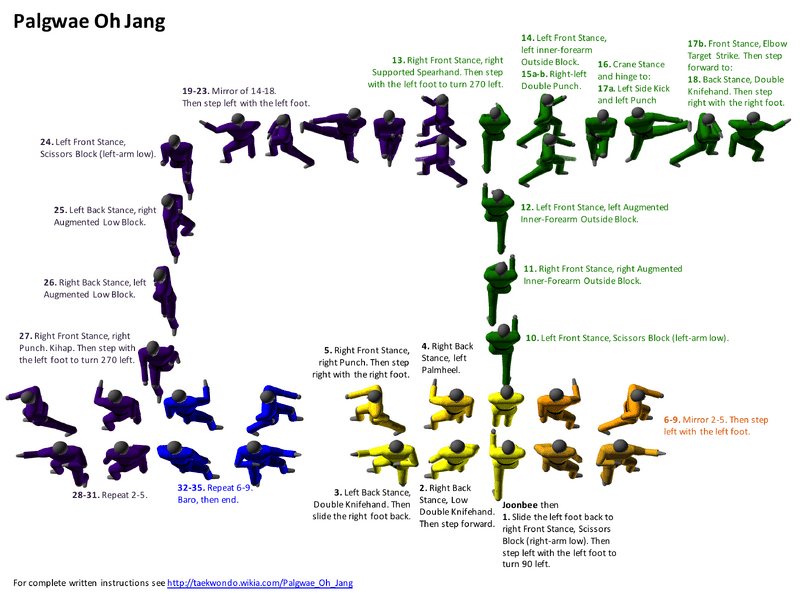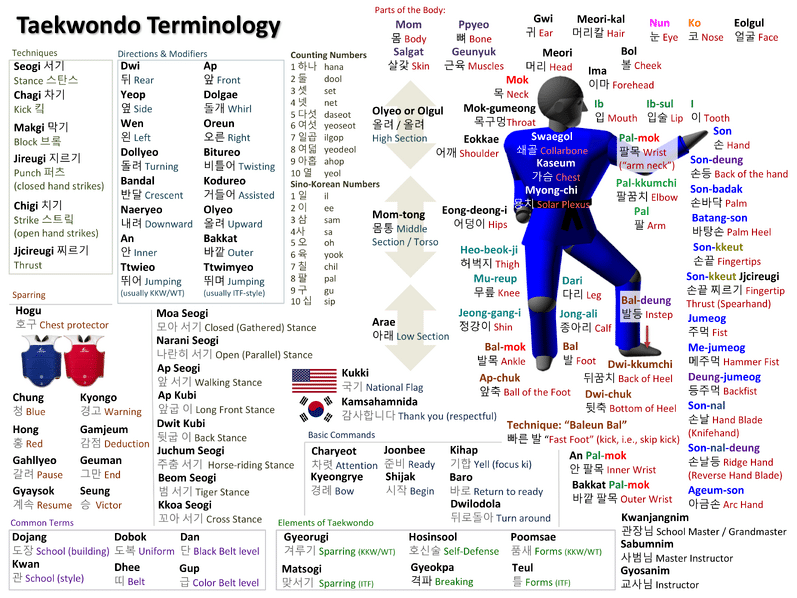Rough Rider
Green Belt
What terms do you use for double fist high block / double fist low block? My school uses Kara Momtong Mahki / Kara Arae Mahki. Looking online I only seem to find references to knife hand blocks (Sonnol).
You can call them that but one hand is the leader, the other the helper. Always remember that.Are you referring to X-blocks? In which case we call them 'X-blocks'.
What terms do you use for double fist high block / double fist low block? My school uses Kara Momtong Mahki / Kara Arae Mahki. Looking online I only seem to find references to knife hand blocks (Sonnol).
No, not X- block. We call that Yeot Pero Mahki.
An example of what I'm talking about is found in Palgwe O-jang. After the initial scissors block, you turn to the left and do a double knife-hand low, followed by a double knife-hand high (Sonnol arae/momtong mahki). The blocks I'm talking about are the same except they have a closed fist. They come later in the form.
After turning toward the front, you do another scissors block followed by double-fist high (in long stance) twice. Later, after turning toward the rear, yet another scissors block followed by double-fist low (back stance) twice.

I'm a kung fu guy so I'm not familiar with any of the forms or names. However, I may be familiar with the technique that you speak of as there may be a similar technique in Jow GaPerhaps you're not familiar with the Palgwe forms. How about Taegeuk Sa jang? The very first move is double knife-hand high. Every site I checked agrees that this is called "Sonnol Momtong Makki" in Korean. My question is: what would you call it if you did the same move but your hands were closed in fists?
Good point, that's a bad habit throughout my school. I assure you we're not "waving our hands in the air like we just don't care"One nitpick: the blocks we're talking about aren't really low and high, they're low and mid-height.

Tae Kwon DoIt has nothing to do with Karate, Gnarlie. I only mentioned Karate before to describe the pronunciation. Here's how my instructors explained it:
Sonnol Momtong Mahgi
Sonnol = open or knife hand
Momtong = upper torso
Mahgi = block
Kara Momtong Mahgi
Kara = closed hand or fist
Momtong = upper torso
Mahgi = block
Substitute arae for momtong and it becomes a low block. The blocks are identical except for how you hold your hands.
Mahgi = block
Interesting read. What I took from it is that Kara can be a very general term for hand techniques, rather than the very specific closed fist that I've been taught. Like I said before, this isn't the first time the terminology has been questionable.